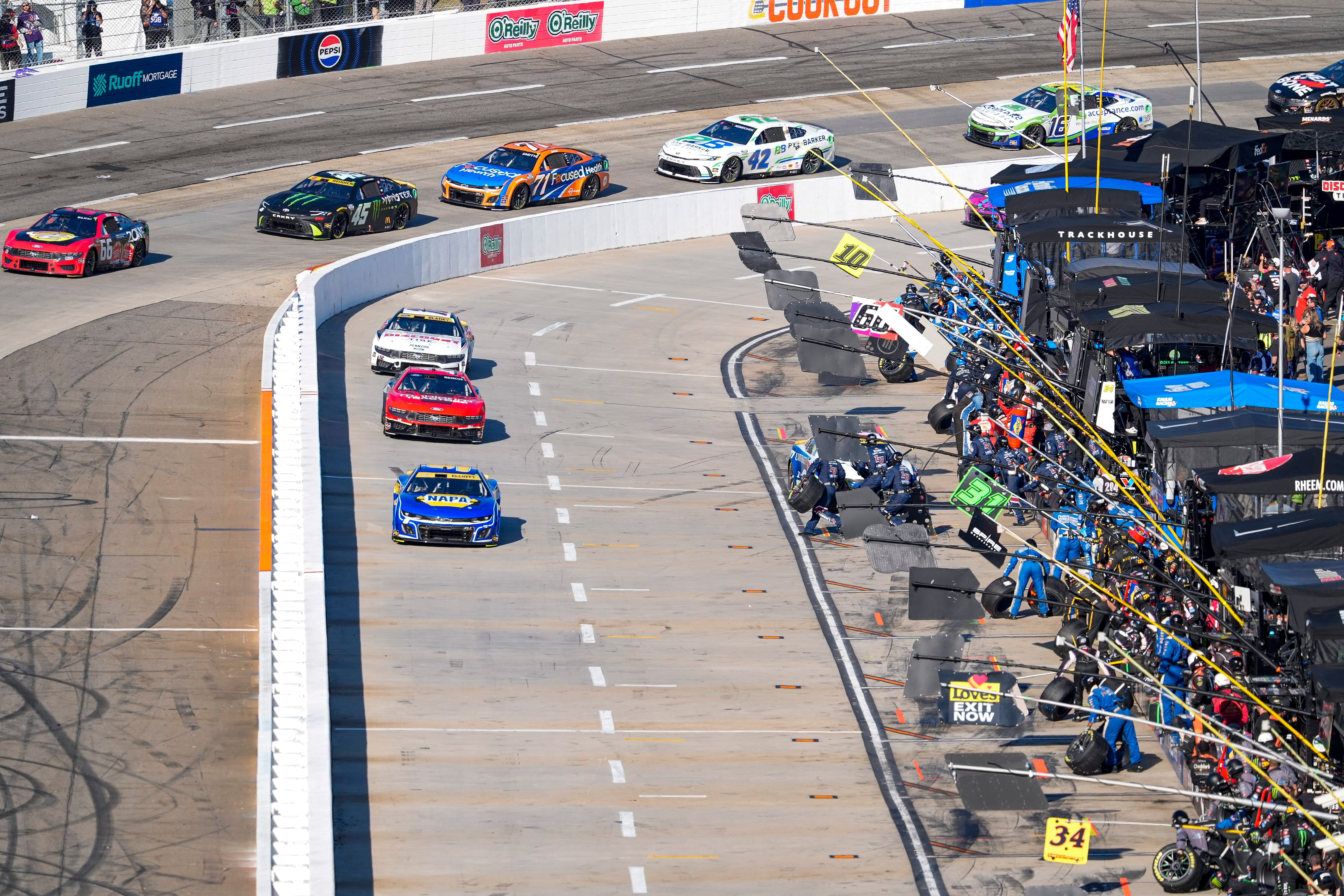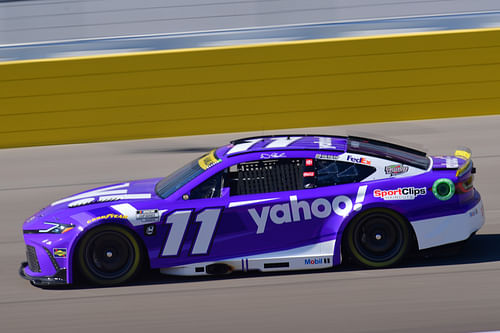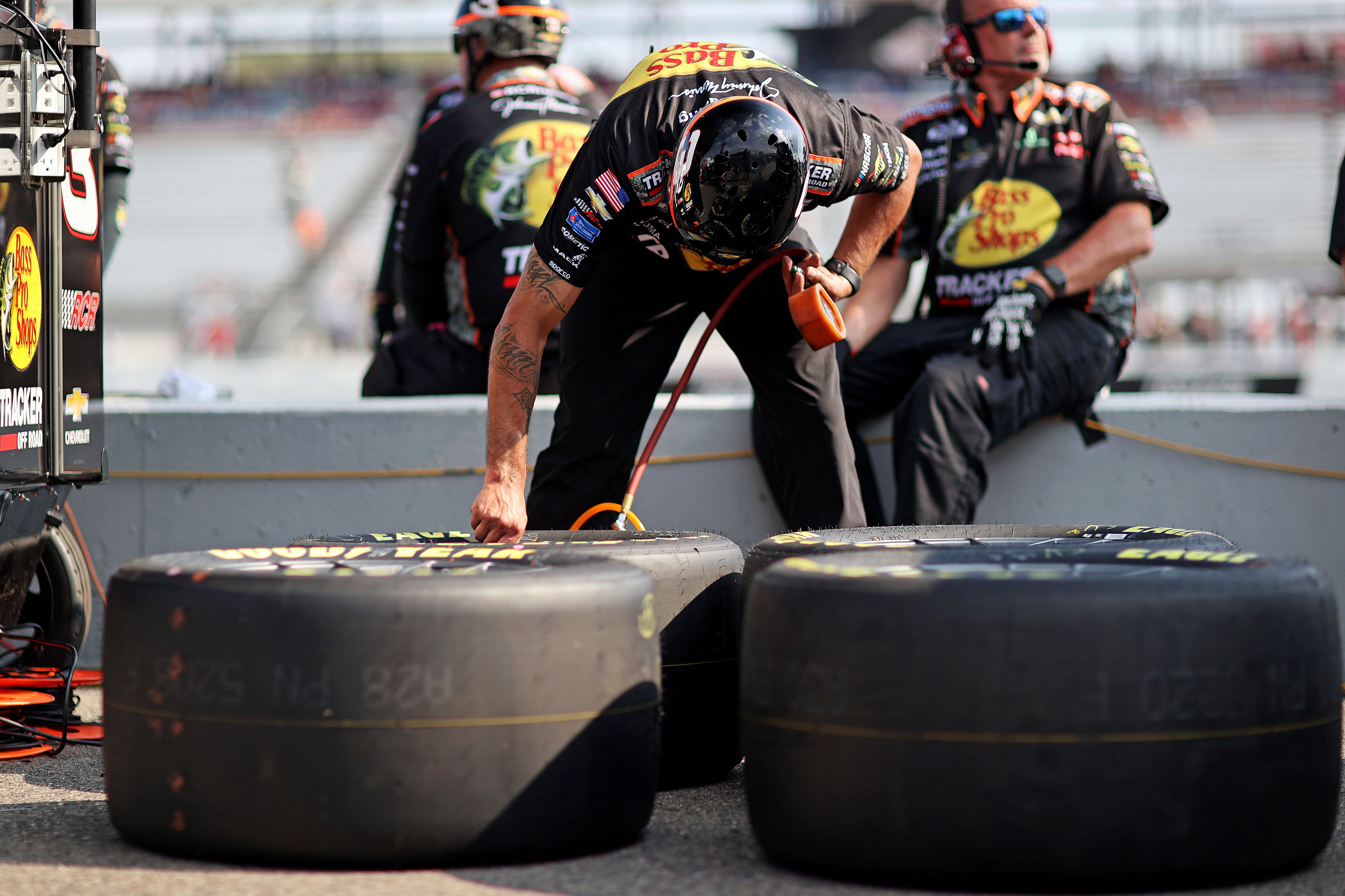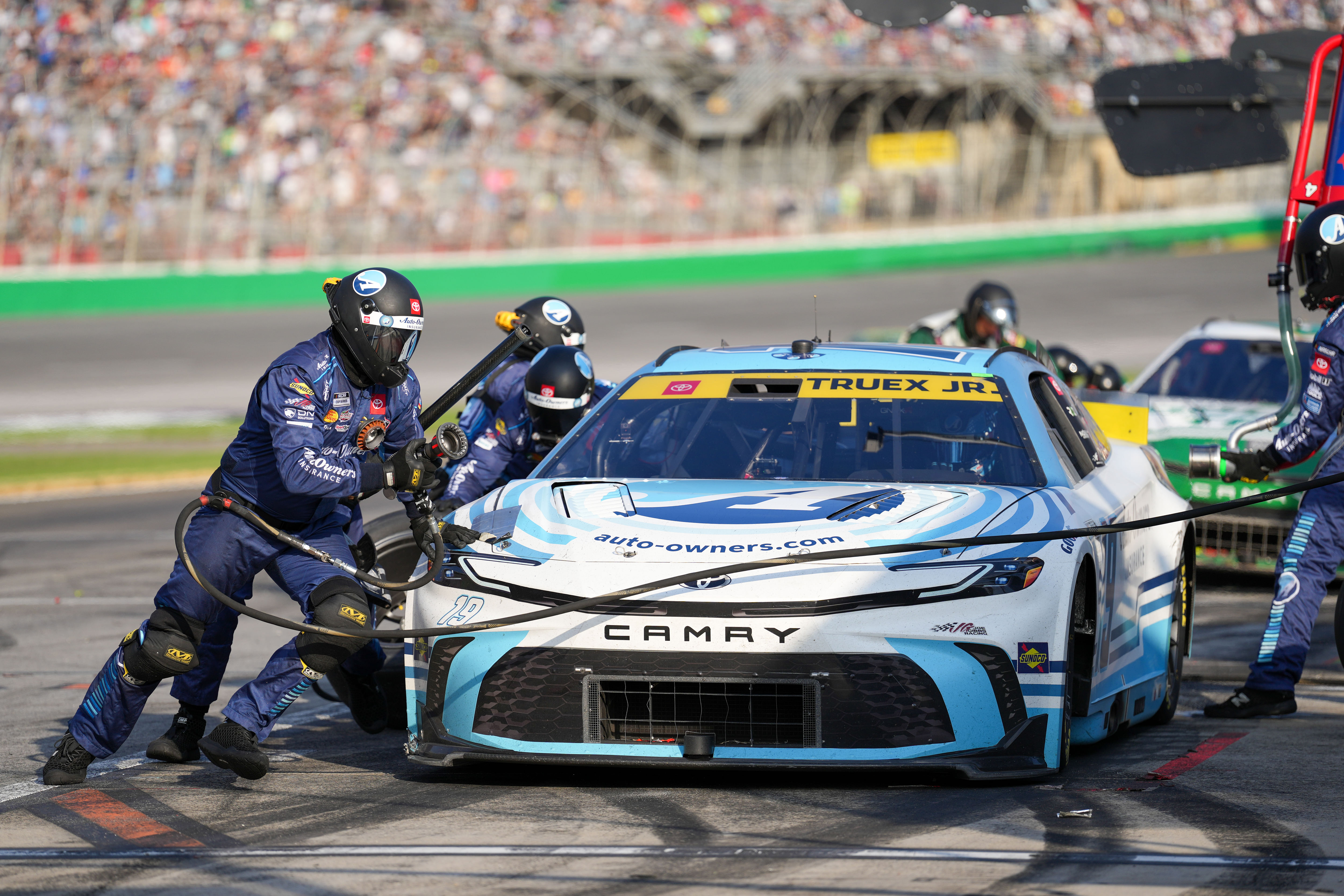
Why do NASCAR drivers race on flat tires on short tracks? Joe Gibbs Racing explains
Joe Gibbs Racing explained why NASCAR drivers race on flat tires on short tracks like Martinsville Speedway. Drivers purposely run on flat tires for various reasons, including ensuring the cars have the optimal grip to handle better around an oval race track.
Joe Gibbs Racing is a Huntersville, North Carolina-based NASCAR team fielding four drivers in Toyota Camry XSEs in the Cup Series. The driver lineup includes Christopher Bell (20), Denny Hamlin (11), Martin Truex Jr. (19), and Ty Gibbs (54).
The team has a tall order to give its drivers an advantage during race weekends, and tire strategies, such as the amount of tire pressure, are key to a strong result. NASCAR doesn’t regulate the minimum tire pressure, allowing teams to let their cars run flat in races.

Read on to find out more about flat tires on short-track races.
Better handling
With lower tire pressure, tires would have more areas making contact on the ground, which provides more grip. As a result, drivers can run at higher speeds without compromising the handling as much. Running with a lower grip forces drivers to slow down, especially when turning to avoid spinning out of the race.
Since NASCAR is known to turn left only, teams like Joe Gibbs Racing only deflate the left tires, meaning the right tires are inflated as normal.
Numbers-wise, the tire pressure varies depending on different factors such as track layout and temperature. Although, JGR explained tire pressure, measured in PSI, could sometimes be in single digits. It is important for drivers to evaluate the car during practice sessions to ensure teams run with their ideal tire pressure for the qualifying and the race.

Short tracks usually have a lower average speed than intermediate and superspeedway tracks, thus running with a flat tire isn’t much of an issue.
Tire pressure increase when hot
Another factor NASCAR teams have to look at is tire temperature around a specific track. When tires heat up, pressure also builds up. Several factors can make tires hotter during races, including weather and driving style, like how much braking drivers push usually when turning.
Tire pressure varies throughout a race. Underinflating a tire could compromise car control and handling, forcing drivers to run slower than usual. On the other hand, overinflating a tire could result in a tire blowout, leading to a premature stop in the pit box. Either way, unsatisfactory tire pressure would cost drivers some positions.

With that being said, NASCAR teams must ensure the optimal tire pressure for their cars during races. From that point on, teams will leave it up to the drivers to deliver good performance on the track. This shows that a strong race result is a collective effort from the drivers and the crews.